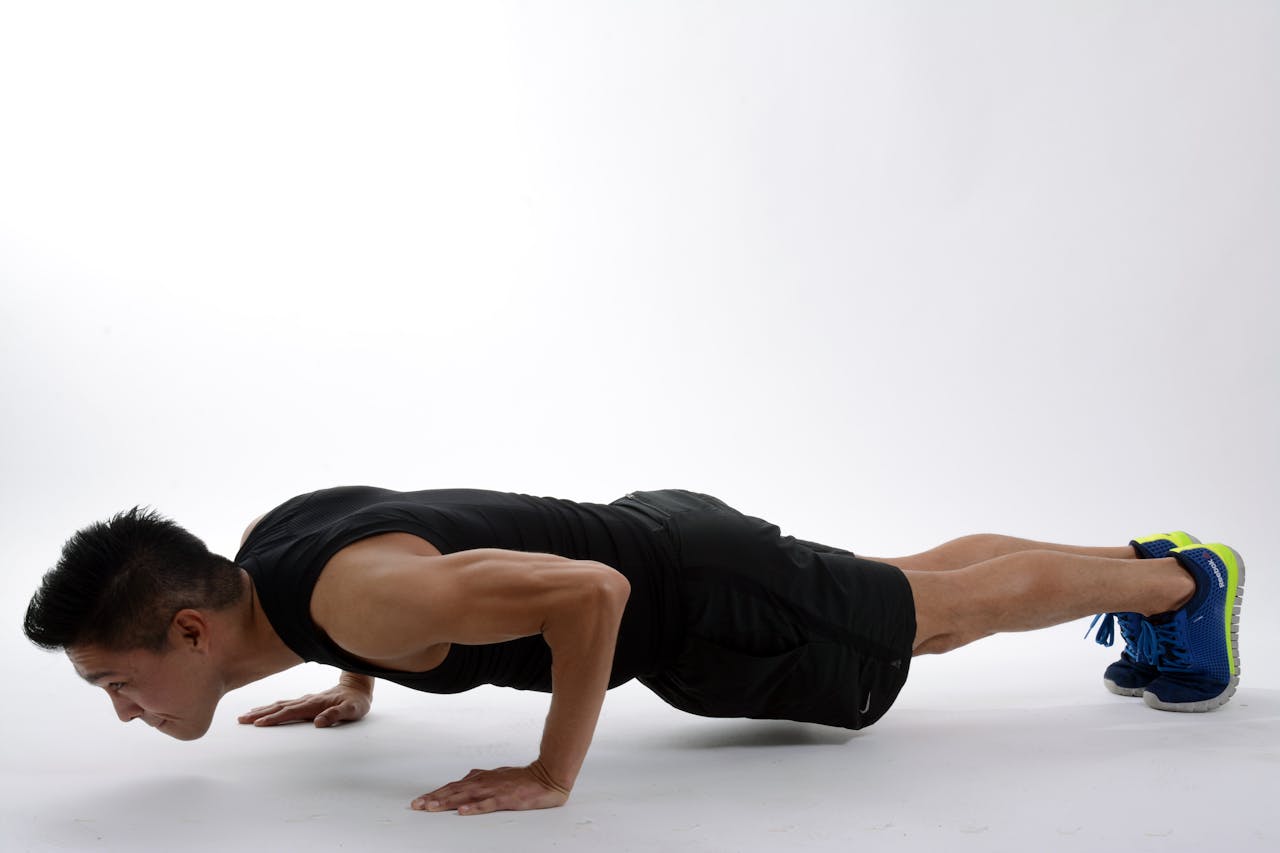Creating a fitness routine that delivers results and fits seamlessly into your life means striking the right balance between physical training, recovery, and mental health. Below, you’ll discover strategies for combining strength work, cardiovascular exercise, flexibility training, and mindful practices to craft a well‑rounded program that keeps you motivated and injury‑free.
1. The Four Components of a Holistic Routine
A truly sustainable fitness plan involves four interconnected pillars:
- Strength Training
- Cardiovascular Exercise
- Flexibility & Mobility
- Mind‑Body Practices
1.1 Strength Training: Build a Solid Foundation
- Frequency: 2–4 sessions per week
- Focus Areas: Major muscle groups (legs, back, chest, shoulders, core)
- Sample Exercises:
- Squats & Lunges (lower body strength)
- Push‑Ups & Rows (upper body push/pull)
- Dead Bugs & Planks (core stability)
- Progression Tips:
- Gradually increase resistance (weights, bands, or even slow tempos)
- Alternate compound movements (multi‑joint) with isolation work for balance
1.2 Cardiovascular Exercise: Elevate Heart Health
- Frequency: 3–5 sessions per week
- Modalities to Explore:
- HIIT (High‑Intensity Interval Training): Short bursts of max effort, followed by rest (e.g., 30 seconds sprint/60 seconds walk).
- Steady‑State Cardio: Jogging, cycling, swimming at a moderate, consistent pace for 30–60 minutes.
- Low‑Impact Options: Elliptical, rowing, or brisk walking to reduce joint stress.
- Goal: Aim for at least 150 minutes of moderate‑intensity or 75 minutes of vigorous‑intensity cardio each week.
2. Flexibility & Mobility: The Preventive Edge
Tight muscles and restricted joints compromise performance and increase injury risk. Integrate these elements:
- Dynamic Warm‑Up (5–10 minutes): Leg swings, arm circles, hip openers to prepare for movement.
- Post‑Workout Stretching (10 minutes): Hold each stretch 20–30 seconds for major muscle groups.
- Dedicated Mobility Sessions (1–2 times/week):
- Yoga Flows: Poses like Downward Dog, Warrior II, and Pigeon.
- Foam Rolling: Focus on tight areas (IT band, quads, calves) to break up muscle adhesions.
3. Mind‑Body Practices: Rethinking “Rest” Days
Rest days aren’t just about lying on the couch—they’re opportunities to work on mental resilience, breath control, and gentle movement:
- Meditation & Breathwork (10–15 minutes):
- Box Breathing: Inhale for 4, hold 4, exhale 4, hold 4.
- Guided Imagery: Visualize yourself completing a tough workout with perfect form.
- Active Recovery Activities:
- Leisurely Walks: Stimulate circulation without strain.
- Tai Chi or Gentle Yoga: Slow, controlled movements that soothe the nervous system.
4. Structuring Your Week for Maximum Adherence
A clear schedule removes decision fatigue. Here’s a sample framework:
| Day | AM Session | PM Session (Optional) |
|---|---|---|
| Monday | Strength (Full Body) | 10‑Minute Mobility Flow |
| Tuesday | HIIT Cardio (20–30 minutes) | — |
| Wednesday | Strength (Upper Body Focus) | Meditation & Breathwork |
| Thursday | Steady‑State Cardio (45 minutes) | Foam Rolling (15 minutes) |
| Friday | Strength (Lower Body Focus) | Gentle Yoga (20 minutes) |
| Saturday | Mixed Cardio & Core Circuits | — |
| Sunday | Rest: Active Recovery + Meditation | — |
Tip: If two sessions in one day feel like too much, merge mobility or breathwork into your warm‑up or cool‑down routines.
5. Nutrition & Hydration: Fueling Performance
Your workout plan works best when paired with thoughtful nutrition:
- Balanced Meals: Aim for roughly 30% protein, 40% complex carbs, 30% healthy fats.
- Pre‑Workout Snack (30–60 min before): Greek yogurt with berries or a slice of whole‑grain toast with avocado.
- Post‑Workout Recovery: Smoothie with whey or plant protein, a banana, and spinach for carbs + micronutrients.
- Hydration Strategy:
- Daily Goal: Minimum half your body weight in ounces of water (e.g., 150 lbs → 75 oz).
- Electrolyte Support: Add a pinch of mineral‑rich salt or an electrolyte tablet on intense training days.
6. Tracking & Accountability: Keeping Momentum
- Fitness Journal or App: Log workouts, nutrition, sleep quality, and mood.
- Weekly Check‑Ins: Review your data; adjust training load or nutrition as needed.
- Community & Coaching:
- Join a local running club or online strength group.
- Consider periodic sessions with a personal trainer or virtual coach for feedback.
7. Troubleshooting Common Challenges
| Challenge | Solution |
|---|---|
| Lack of Motivation | Schedule social workouts or set mini‑challenges. |
| Plateaus | Change rep ranges or introduce new exercises. |
| Time Constraints | Use micro‑workouts or split sessions. |
| Frequent Injuries | Prioritize mobility, reduce load, & focus on form. |
| Poor Sleep | Establish a wind‑down routine; avoid screens 1 hr before bed. |
Conclusion: Your Path to Lasting Fitness
By thoughtfully blending strength training, cardio, flexibility work, and mind‑body practices, you’ll not only see physical improvements but also cultivate resilience, focus, and overall well-being. Remember, the best routine is the one you enjoy and can commit to long term. Start small, stay consistent, and celebrate every milestone—your healthiest, happiest self is within reach.



